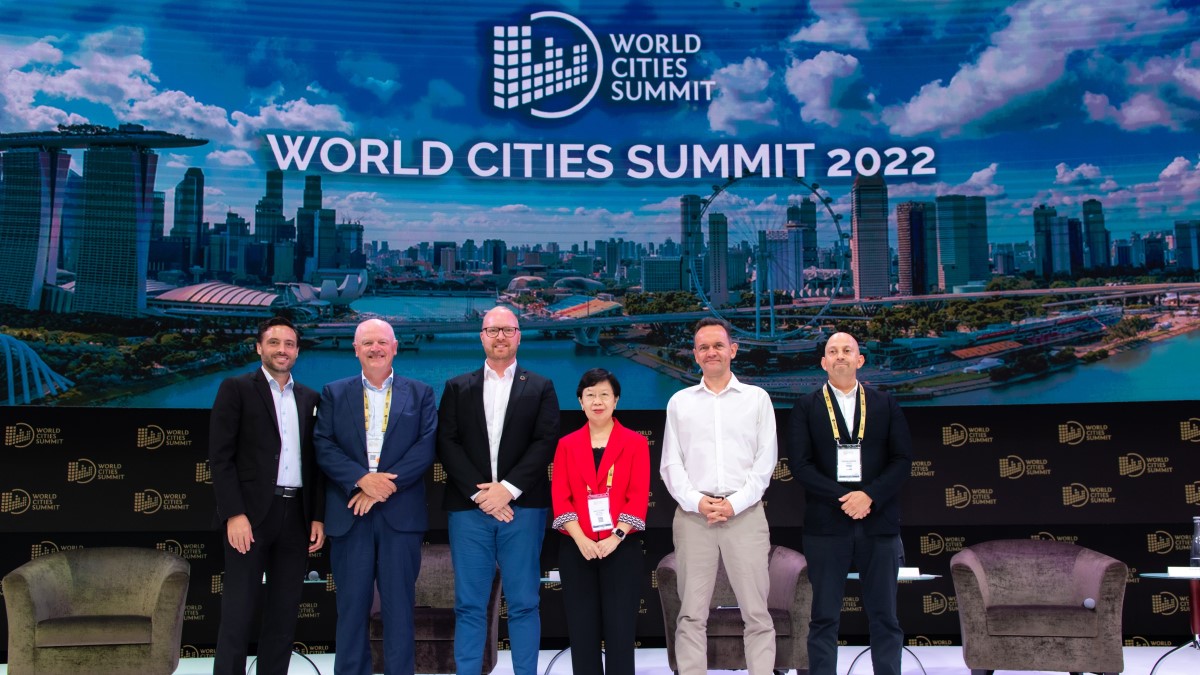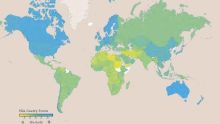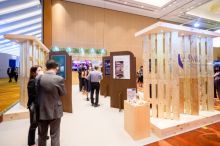Post-pandemic world – humans at the heart of smart cities

In a post-pandemic world, rocked by geopolitical crises, the future of cities has never been more uncertain. Whatever they should look like in the future, leaders should always place humans and their needs at the forefront of city development, said Professor Lily Kong, SMU President and Lee Kong Chian Chair Professor of Social Sciences.
Prof Kong emphasised the need for “listening leaders” to the audience of several hundred at the World Cities Summit 2022 roundtable discussion “What does the future hold for cities?”. The four-day annual Summit, which looks at developments and issues facing urban living in the future, included keynote speeches by Senior Minister Teo Chee Hean, and Second Minister for Finance Indranee Rajah, among other leaders, took place this year at Sands Expo and Convention Centre in August 2022.
Moderated by Mr Simon Baptist, of the Economist Intelligence Unit (EIU), the panel for the roundtable discussion on the future of city living especially in a post-COVID world consisted of Prof Kong; Mr Flemming Borreskov, President of the Danish group, Catalytic Society, which consults on cities and leadership; Mr Josef Hargrave, Director and Global Foresight Leader of built-environment consultancy Arup; Mr Craig Lawton, Technical Chief of Global Smart City Programme at Amazon Web Services; and Mr David Wallerstein, Chief eXploration Officer of Tencent Holdings.
Moving forwards from the disruption
Cities have long since been the epicentres of growth and innovation, before COVID-19. But over the past three years, the whole world environment has changed: there was the pandemic and knock-on effects including supply chain disruptions and logistical bottlenecks, as well as resource scarcity – partly also due to the Russian invasion of Ukraine, and the tensions arising between the US and China. And last, but not least, the world economy is facing the threat of recession in several major countries.
The globe-spanning panel of experts discussed how these unprecedented times have changed how urban dwellers live and work, and tries to get a glimpse of what we may expect in the years to come.
Prof Kong took the opportunity to expand on the notion of “listening leaders”. City living goes beyond having the basic infrastructure, manpower and resource supplies such as in Singapore. It has increased our needs beyond the lower ones on Maslow's hierarchy —physiological needs (for things like food and water), safety needs, towards more complex ones that include belongingness and love needs, esteem needs, and self-actualisation needs.
“That’s where ‘listening urban leaders’, who are sensitive to the humanistic city and recognise the needs of the human individual, are so important. They listen not just through data, but also through the heart.”
As much as technology – big data, analytics and artificial intelligence through initiatives such as TraceTogether and various Gov.sg initiatives – have facilitated Singapore’s lifestyle over the pandemic period, Prof Kong emphasised the importance of nurturing the next generation of “listening leaders” to propel the city-state onwards. At SMU, the ability to integrate digital innovation with human values and needs lies at the core of all initiatives – achieved through interdisciplinary learning, and maintaining faith in the strength and robustness of sciences, including human and social sciences.
Urban living as a driver of progress
The way humans interact with their environment is constantly changing, and it's hard to pinpoint what the future of cities will be. However, it's likely that cities will continue to play a major role in human society for years to come.
Prof Kong said: “People will continue to want to live in cities. As seen in Southeast Asia and other developing nations, the city represents hope, jobs and new opportunities in the way that rural areas do not. And that constant shift from rural to urban will continue.”
Mr Baptist shared statistics from the Economist Intelligence Unit’s city liveability index, which ranks cities on a scale of zero to 100, stated that the average global liveability score was 75.9 before the COVID pandemic. That fell by about 10 per cent in 2021, as the average score went down to 69. Said Mr Baptist, “It has now recovered this year back up to 73, which is higher than last year, but still below where it was pre-pandemic.” So cities are surging back to the forefront.
But increased city living would lead to ongoing challenges such as heavier congestion for traffic, and resource scarcity – both for building in newer cities, as well as maintaining liveability, such as importing food, water, fuel and the raw materials for everyday life. Not to mention the increased load on such simple, rarely considered items like sewers and waste disposal.
Mr David Wallerstein from Tencent, and Professor Kong discussed the issue of cities being isolated from resources. She reminded the audience that Singapore has been dealing with resource scarcity as a fundamental existential question since Singapore was founded – a country that has barely any resources except its geographical location and its population.
Under its “30 by 30” initiative, the Singapore Government had set a target of providing 30 per cent of our own nutritional needs by 2030 through domestic agri-food capabilities and capacities. However, three years after it has been implemented, the country has achieved barely a third of its goals, said Prof Kong.
The initiative aims to help industry here to not only source alternative routes for supply chains – such as when Singapore’s precious chicken-rice hawker industry was threatened by supply problems or when, during the pandemic, fresh vegetables largely stopped flowing in from Southeast Asia and China. Prof Kong also highlighted alternative food sources being developed in Singapore such as SMU’s start-ups that produce cell-based milk and insect-protein animal feed – all to bolster Singapore’s ability to feed itself.
A move away from “mega” cities
As a result of the lockdowns during the pandemic, many people had been forced to work from home or at a distance, unable to go in to offices. Even when the lockdowns were lifted, the experience had empowered more workers to consider working from home and away from city centres. This shift in work arrangements have triggered an exodus of city dwellers towards smaller or so called second- and third-tier cities, as well as towards more rural areas.
Such a disruption led to an increased infrastructure demand in satellite cities, to connect not only with major hubs (via transport and communication channels) but also to physically develop such regions. Amazon’s Craig Lawton highlighted that some of the “second-tier cities” he had dealt with were facing infrastructure disadvantages as people moved away from cities like London and New York. “The 20-year timelines have been compressing – [second-tier cities] have to look at things like wastewater management in the next five years because of people moving there now.”
Similarly, moderator Simon Baptist brought up the effects of the changing work habits on regional hubs – given that work could increasingly be “long range”, many jobs could be done from either anywhere in the world, or could be really local instead of using expensive regional hubs. He cited how Dubai had reacted to maintain its importance and utility as a regional hub by ensuring there were new visas more easily available, and looking into well-being of freelancers; while Hong Kong remained largely closed because of China’s zero COVID policy – thus affecting the Asian economic hotspot negatively.
Mr Josef Hargraves, from Arup, agreed that work patterns were definitely changing and pointed out that there has also been a shift in engagement in consumption patterns. “Thursday, for example, is a ‘new Friday’ because people tend to work from home now on a Friday and a Monday. So the entertainment district and the food and beverage sector is much busier on a Thursday now.”
While a lot of central business districts and city centres have really suffered during the pandemic, he said that local neighbourhoods were definitely thriving with new shops, local retail, and much more local engagement with the community. “The notion of the 15-Minute City and even the One-Minute-City [where the jobs and work are close to where people live], become really important in…planning and design.” This can be seen in Singapore very clearly with the development of neighbourhood hubs.
Working with tech to forge a new tomorrow
Tencent’s David Wallerstein was very clear in his vision of tomorrow: “I truly believe that we can have a new model that marries the countryside around the city with the city.”
He drew a word picture of living in the “countryside” or more rural surroundings and travelling – with vertical take-off and landing vehicles similar to helicopters, running on renewable energy and batteries – into the city and back. This would allow us to continue to drive to develop the economy with working in the high-pressure, high-development environment of cities, while also diluting and diversifying the need for resources for water, food, sanitation, infrastructure and so on, away from crowded areas.
Overall, the panellists agreed that it was time for “second-tier cities” to step up and take the lead in innovation, driving the next phase of human development forwards



